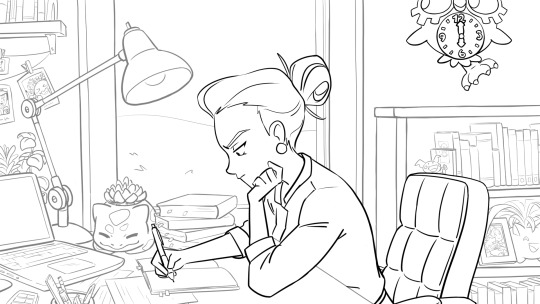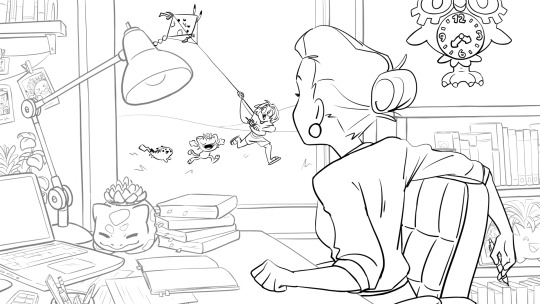#study finds
Text
Black parents and their children are more likely to experience unfair treatment when seeking medical care than others, a new study from the Urban Institute found.
The study, released earlier this week, is based on data from the nonprofit’s Health Reform Monitoring Survey, the latest round of which was conducted in June.
Researchers found that about 22% of Black parents said they were judged unfairly or mistreated because of their race or ethnicity, language, health insurance type, weight, income, disability or other characteristics.
The rate at which Black parents reported this treatment was about 10% higher than parents who are White, Hispanic or who identify as part of other racial groups, the survey found.
“These experiences are disproportionately affecting parents of color and their children, especially Black parents, and so understanding and interrupting these experiences of under-treatment and health care could be an important step towards helping to close a lot of the racial and ethnic health inequities that we see,” Dulce Gonzalez, a senior researcher at the Urban Institute and co-author of the study, told CNN.
Race, ethnicity, country of origin and primary language were among the most common reasons why Black parents said they were treated unfairly.
The study found that 7 in 10 parents who reported experiencing unfair health care treatment were more likely to delay treatments after those experiences.
The unfair treatment could have negative health consequences, cause additional stress to patients and lead them to mistrust the health care system to the point of forgoing necessary treatments, Gonzalez said.
“There’s going to be a lot of changes that are needed on multiple fronts that address … not only sort-of implicit and explicit biases that providers and their staff could hold towards people of color, but also just broader changes in how we’re delivering health care,” she said.
The survey was conducted online among a nationally representative sample of 9,494 US adults ages 18 to 64, but the analysis was based on the responses of 2,981 parents of children under age 19.
#Black parents and their children are more likely to experience unfair treatment when seeking medical care#study finds#Black Children#systemic racism#adultification#adultification of Black Children
3 notes
·
View notes
Text
It Could Cost $21 Billion to Clean Up California’s Oil Sites, Study Finds
For well over a century, the oil and gas industry has drilled holes across California in search of black gold and a lucrative payday. But with production falling steadily, the time has come to clean up many of the nearly quarter-million wells scattered from downtown Los Angeles to western Kern County and across the state.
The bill for that work, however, will vastly exceed all the industry’s future profits in the state, according to a first-of-its-kind study published Thursday and shared with ProPublica.
“This major issue has sneaked up on us,” said Dwayne Purvis, a Texas-based petroleum reservoir engineer who analyzed profits and cleanup costs for the report. “Policymakers haven’t recognized it. Industry hasn’t recognized it, or, if they have, they haven’t talked about it and acted on it.”
The analysis, which was commissioned by Carbon Tracker Initiative, a financial think tank that studies how the transition away from fossil fuels impacts markets and the economy, used California regulators’ draft methodology for calculating the costs associated with plugging oil and gas wells and decommissioning them along with related infrastructure. The methodology was developed with feedback from the industry.
The report broke down the costs into several categories. Plugging wells, dismantling surface infrastructure and decontaminating polluted drill sites would cost at least $13.2 billion, based on publicly available data. Adding in factors with slightly more uncertainty, like inflation rates and the price of decommissioning miles of pipeline, could bring the total cleanup bill for California’s onshore oil and gas industry to $21.5 billion.
Meanwhile, California oil and gas production will earn about $6.3 billion in future profits over the remaining course of operations, Purvis estimated.
Compounding the problem, the industry has set aside only about $106 million that state regulators can use for cleanup when a company liquidates or otherwise walks away from its responsibilities, according to state data. That amount equals less than 1% of the estimated cost.
Taxpayers will likely have to cover much of the difference to ensure wells are plugged and not left to leak brine, toxic chemicals and climate-warming methane.
“These findings detail why the state must ensure this cost is not passed along to the California taxpayer,” state Sen. Monique Limón, a Santa Barbara Democrat who has written legislation regulating oil, said in a statement. “It is important that the state collect funding to plug and abandon wells in a timely and expeditious manner.”
Representatives of the state’s oil regulatory agency, the California Geologic Energy Management Division, did not respond to ProPublica’s request for comment on the report’s findings.
Rock Zierman, CEO of the California Independent Petroleum Association, an industry trade group, said in a statement that companies spent more than $400 million last year to plug and clean up thousands of oil and gas wells in the state. “This demonstrates their dedication to fulfilling their obligations and mitigating the environmental impact of their operations,” he said.
Fees on current oil and gas production will offset some of the liabilities, but they’re nowhere near enough to address the shortfall quantified by the new report.
“It really scares me,” Kyle Ferrar, Western program coordinator with environmental and data transparency group FracTracker Alliance, said of the report’s findings. “It’s a lot for the state, even a state as big as California.”
Industry in Decline
High oil prices have translated to huge profits for the industry in recent years, but Carbon Tracker’s report found that’s likely to be short-lived. Only two drilling rigs were operating in the state at one point this year, meaning few new wells will be coming online, and more than a third of all unplugged wells are idle.
Judson Boomhower, an environmental economist and assistant professor at the University of California, San Diego who has studied California’s oil industry, said there are inherent uncertainties in estimating future oil revenues. For example, one variable is how quickly the country shifts from internal combustion engine vehicles to electric. But, he said, Carbon Tracker’s estimates for environmental liabilities track with his research.
“It’s a state in the twilight of its production period, and that means big liabilities,” Boomhower said. He added that now is the time for regulators to prevent companies from offloading their wells to “thinly capitalized firms” unable to shoulder the cleanup.
As ProPublica reported last year, the major oil companies that long dominated in California and have the deep pockets necessary to pay for environmental cleanup are selling their wells and leaving the state, handing the task to smaller and less well-financed companies.
Roughly half of the wells drilled in California have changed hands through sales and bankruptcies since 2010, according to data Ferrar analyzed.
Smaller companies are often one bankruptcy away from their wells being orphaned, meaning they’re left to taxpayers as companies dissolve. The Biden administration recently committed $4.7 billion in taxpayer funds to plug orphan wells.
And the industry’s environmental liabilities in California are far bigger than Carbon Tracker’s report quantifies.
Purvis only included environmental liabilities associated with onshore oil and gas production. Billions of dollars more will be needed to plug offshore wells, remove rigs and reclaim artificial islands used for drilling off the coast of Long Beach, Ventura and Santa Barbara.
Additionally, the report did not quantify the emerging risk of “zombie wells,” which were plugged years ago to weaker standards and are likely to leak if they aren’t replugged. That’s an expensive endeavor, as the average cost to plug one well in California — to say nothing of cleaning up surface contamination — is $69,000, according to Purvis’ research. But some California wells have already begun failing, including in neighborhoods in Los Angeles.
“They’re Not Going to Have Money to Do It Later”
Time is running out to rectify the funding shortfall, for example by increasing the money companies must set aside for well plugging.
Carbon Tracker’s report — using state production data and financial futures contracts on the New York Mercantile Exchange — estimated that as production declines, 58% of all future profits from drilling oil and gas in the state are likely to come over the next two years.
“We have our backs up against the wall in California right now,” Ferrar said. “If companies don’t put money towards it now, they’re not going to have money to do it later.”
Environmental policies could accelerate the industry’s decline. California voters will decide on a ballot initiative in 2024 that would reinstate large buffer zones between communities and oil wells, limiting drilling.
Purvis said acting quickly to plug wells would also “stimulate economic activity” and help smooth the transition for oil and gas workers who stand to lose well-paying jobs in the shift away from climate-warming fossil fuels. Spending large sums to plug old wells would create short-term employment for oil field workers.
As California faces the consequences of its failure to quickly clean up aging oil and gas infrastructure, there are likely several million more wells around the country that are either low-producing or already orphaned and will soon need to be decommissioned.
“California’s going to be a test case or the leading edge of this,” Boomhower said. “This same problem is eventually going to manifest everywhere.”
#czlifornia#epa#environmental disasters#oil wells#plug oil wells in california#It Could Cost $21 Billion to Clean Up California’s Oil Sites#Study Finds
3 notes
·
View notes
Text
Yes, We Can End TB
1.6 million people. That’s how many died from TB in 2021, according to the World Health Organization...
Vivien Leigh, the British national actress who played Scarlett O'Hara in Gone with the Wind, was plagued for more than 20 years and finally killed by tuberculosis.
Albert Schatz first isolated streptomycin in 1943 from Streptomyces griseus and Streptomycin was the first molecule active against TB.
World Tuberculosis Day, observed on 24 March each year, is designed to build public awareness about the global epidemic of tuberculosis (TB) and efforts to eliminate the disease.



#science news#chemistrymolecule#chemistry teacher#chemistry class#chemistry#kingdraw#molecule#organicchemistry#organic#compound#dailychem#software#study finds#studyblr#scienceblr#tb#tuberculosis#public health#medicine#disease#healthcare#surgery
3 notes
·
View notes
Text

Peace and love
#pink posts#i saw a tweet that was like “i see other people's art” --> i get discouraged#i understand that seeing art that is prettier than yours can be discouraging but why not twist that a bit?#why does it look prettier to you? is it the colors#is it the textures they used? the brushes?#study them and try to put your spin on it#and maybe you'll find your art beautiful as well
93K notes
·
View notes
Text
Random goon: Hey boss, were you the one to pick that name as an alias? And why this one?
Red Hood : I used to have another name, before... A long time ago. But that person is dead now. I get to choose for myself now, they can't take that from me. I won't let them.
Goon: Huh.
***
Random Goon: Say boss, why do you never take off your shirt in front of us?
Red Hood: Well uh, I actually have that really fucked scar on my chest and I'm not comfortable with...
Random Goon: Don't worry boss, we get it, you don't have to explain yourself to us.
***
Red Hood, high on some toxin: God, I wish my family...
Random Goon (on boss-sitting duty): why not try reaching out to them?
Red Hood: They would never accept me as I am now... They wouldn't agree with my so-called "life choices". Besides, they don't miss me, they miss the person they think I used to be... I wasn't even a man when I last saw them.
Random Goon: Damn boss, that sucks.
***
And then the goons throw the Red Hood a party on trans visibility day and Jason is so confused he straight up cries.
#supportive goons#Jason read somewhere that showing vulnerability helps being a good leader#they have pool parties#the goons love jason#best mafia boss ever#he knows all their names and helps their kids study for school#they're all very concerned to find out he's 19#jason todd#under the hood#under the red hood#red hood's goons#oh to be a zombie drug lord in this economy#they're a little confused but they got the spirit#batman#batfam#batfamily#batman and robin#assigned trans at goon
26K notes
·
View notes
Text
Zero Calorie Sweetener Linked to ‘Blood 🩸 Clots’ and Risk of Heart Disease, Study Finds
— By Sandee LaMotte | August 08, 2024

Study: Artificial Sweeteners Linked to Higher Stroke Risk (2019)
Consuming a drink with erythritol — an artificial sweetener used to add bulk to stevia and monk fruit and to sweeten low-carb keto products — more than doubled the risk of blood clotting in 10 healthy people, according to a new pilot study.
Clots can break off blood vessels and travel to the heart, triggering a heart attack, or to the brain, triggering a stroke. Previous research has linked erythritol to a higher risk of stroke, heart attack and death.
“What is remarkable is that in every single subject, every measure of platelet responsiveness (clotting) went up following the erythritol ingestion,” said lead study author Dr. Stanley Hazen, director of the Center for Cardiovascular Diagnostics and Prevention at the Cleveland Clinic Lerner Research Institute.
Consuming a drink with an equal amount of glucose, or sugar, did not affect blood platelet activity in another group of 10 people, said Hazen, who is also the Jan Bleeksma chair in vascular cell biology and atherosclerosis at the Cleveland Clinic.
“This is the first direct head-to-head comparison of the effects of ingesting glucose versus ingesting erythritol on multiple different measures of platelet function,” Hazen said. “Glucose doesn’t impact clotting, but erythritol does.”
While small, the study was “very intriguing and interesting,” said Dr. Andrew Freeman, director of cardiovascular prevention and wellness at National Jewish Health in Denver.
“I’m not saying we need to cease using these sugar alcohols immediately, but this line of research certainly begs the question: Are they safe or not?” said Freeman, who was not involved in the research.
In response to the study, the Calorie Control Council, an industry association, told CNN that 30 years of science has shown erythritol to be a “proven safe and effective choice” for sugar and calorie reduction.
“Consumers should interpret the results of this pilot with extreme caution. The limited number of participants, a total of 10, were given an excessive amount of erythritol, nearly quadruple the maximum amount approved in any single beverage in the United States,” the council’s president, Carla Saunders, said in an email.
However, the amount of erythritol used in each drink in the study — 30 grams — was the equivalent of what is included in typical sugar-free sodas, ice creams or muffins, of which people often eat more than one, Hazen said.
“This research raises some concerns that a standard serving of an erythritol-sweetened food or beverage may acutely stimulate a direct clot-forming effect,” said study coauthor Dr. Wai Hong Wilson Tang, research director for heart failure and cardiac transplantation at the Cleveland Clinic, in a statement.

It only takes a tiny bit of Artificial Sweetener to add plenty of taste, so filler substances such as Sugar Alcohols are used to create the Granules. Handmade Pictures/iStockphoto/Getty Images/iStockphoto
What Are Sugar Alcohols?
Like sorbitol and xylitol, erythritol is a sugar alcohol, a carb found naturally in many fruits and vegetables. The human body also makes erythritol as a byproduct of glucose metabolism but only in small quantities.
Artificially manufactured in massive quantities, erythritol has no lingering aftertaste, doesn’t spike blood sugar and has less of a laxative effect than some other sugar alcohols. It has about 70% of the sweetness of sugar and is considered zero calorie, according to experts.
Erythritol is the largest ingredient by weight in many “natural” stevia and monk fruit products, Hazen said. It looks and tastes like sugar and can be used for baking. It is also a key ingredient in many keto-friendly products including ice cream, Hazen said.
“If you look at nutrition labels on many keto ice creams, you’ll see ‘reducing sugar’ or ‘sugar alcohol,’ which are terms for erythritol,” he told CNN in an earlier interview.
“You’ll find a typical pint has somewhere between 26 and 45 grams in it.”
Artificially created erythritol, along with its cousins, are considered “generally recognized as safe,” or GRAS, by the US Food and Drug Administration.
Series of Studies Show Similar Results
The new study, published Thursday in the journal Arteriosclerosis, Thrombosis, and Vascular Biology, asked 20 participants to fast overnight in preparation for a morning blood draw. Next, they were given a drink with either 30 grams of erythritol or 30 grams of sugar. After 30 minutes, blood was drawn again.
Levels of erythritol in the blood rose by a thousandfold after the one drink with that substance, while blood sugars rose a small amount after the drink containing glucose. However, it was the change in platelet activity that was startling, Hazen said.
“We saw enhanced clotting, using measures of how quickly clots will occlude a vessel or stop blood flow, which is like a model of a heart attack or a stroke,” he said.
Similar results appeared in a 2023 study by Hazen and his colleagues in which eight healthy volunteers also consumed the same amount of erythritol and saw a thousandfold spike of the substance in their blood.
“(Erythritol) remained elevated above the threshold necessary to trigger and heighten clotting risk for the following two to three days,” Hazen said at the time.
That study also analyzed the blood of more than 4,000 people in the United States and Europe and found that those with the highest levels of erythritol were twice as likely to experience a heart attack or stroke.
“What we’re seeing with erythritol is the platelets become super responsive: A mere 10% stimulant produces 90% to 100% of a clot formation,” Hazen said.
The studies were done in healthy people without chronic disease; however, the study’s findings still apply for the future, Hazen said.
“However, if you look at middle-aged America, the average person has two to three risk factors for heart disease, and 70% of us are going to develop heart disease in our lifetime, so maybe we should all be considering action,” he said.
When it comes to the risk of cardiovascular disease, occasional sugar-sweetened treats in small amounts may be preferable to consuming drinks and foods sweetened with the sugar alcohols, he said. That’s especially true for anyone at highest risk for clotting, heart attack and stroke — such as those with existing cardiac disease or diabetes.
“Cardiovascular disease builds over time, and heart disease is the leading cause of death globally,” he said. “We need to make sure the foods we eat aren’t hidden contributors.”
#CNN#Zero Calorie Sweetener#Blood 🩸 Clots#Risk | Heart ♥️ Attack#Study Finds#Artificial Sweeteners#Higher Stroke Risk#Sugar Alcohols#Granules
0 notes
Text
if you ever go to an art gallery and you see a painting and you think "that sucks. I could do that." maybe you can! I think a lot of people could do like. Matisse. Mondrian. Rothko. From a technical standpoint at least. Not everyone but a good number of people. But please consider: Artists™ aren't special people. They're just people. Just regular folks with something to say and a trained skill who showed that skill to the right people.
So instead of being like "that sucks! that's dumb! I could do that. It shouldn't be in a gallery." instead try, "I could do that. I should be in a gallery." and then do it and go and show your art to people.
#do a master study#how did it look? pretty okay? cool u have the technical skillset. find something to say with ur art. say it. go show it to people.#good is so so so subjective and '''technical''' '''mastery''' is meaningless ultimately#I am still beefing with Damien Hirst tho if you're Damien Hirst this post is not about you#get better at taxidermy Damien
3K notes
·
View notes
Text






Jessie studies hard for her pokemon medical license exams.
#(clenches fist) i need them all to have a soft epilogue#in reference to Lofi Study Stream Girl because i'm too lazy to find out what the interior of the Ketchum home looks like u__u#hanamusashipping#ransart
32K notes
·
View notes
Text
0 notes
Text


which one??

ref^
#red one seems more menacing i think#finding a background that fit w this was impossible omfg#my art#creepypasta fandom#creepypasta#creepypasta fanart#digital art#fanart#slenderverse#ticci toby#ticci toby headcanons#ticci toby x y/n#ticci toby hc#ticci toby x reader#ticci toby fanart#light study#art study
3K notes
·
View notes
Text
0 notes
Text


remus is very unimpressed, sirius is very happy :)
based on this post
#i spent like 1.5 hours on this that i definitely should have spent studying instead considering i have an exam tomorrow :')))))#anyway enjoy it extra hard to wish me luck please#remus lupin#remus lupin fanart#harry potter#harry potter fanart#marauders#marauders fanart#Hp#My art#marauders era#Mine#he was supposed to look like a malnourished noodle but i failed at that#and didnt have the time to actually put effort into it#Ive not gone through the process of letting it lie around for a couple days tp find all thr mistakes#So noe im already spotting them but its too late to fix#(Or rather. You guessed ir. I domt have thr timr)#Like the first one is fime but i have several issues with thr second one#But oh welllllllll who cares yolo and all tht jazz
2K notes
·
View notes
Text

older wolfstar mess
#in my portrait study era ig#small brush from the last kierthur doodle rlly got me and its way less daunting to do close ups#plus and also i can work thru my heap of homoerotic reference pics#ive never rlly gotten to draw them grown and i do love these little guys#little wrinkles#marauders#wolfstar#sirius black#remus lupin#my art#mwpp era#the ref i worked from is of two guys in bed i cant find it anymore but yeah wolfstar in bed domestic
6K notes
·
View notes
Text


these two are so interesting to me
characters belong to @canisalbus
#clenches fists. im so sosososo normal about them. i think about them a normal amount (lying)#actually the 2nd image is based on some sort of anime couple pose template(?????) that i saw a while back and wanted to draw them in it#but i swear to god i CANNOT FUCKING FIND IT. i was literally knee deep in yuri and yaoi fanart for hours trying to find that god damn photo#but i dont even know who the characters were and pinterest just shows me bakugou and deku making out sloppy style whenever i try#so i gave up an tried drawing it from memory and cried the whole time. i hate anatomy.. but they look so happy so its fine#god whenever i see Lore or sweet little tidbits for these two i want to tear into something with my teeth and throw something /pos#i genuinely want to study these gay little renaissance dogs under a microscope#what fucks me up is the fact that we all know it ends horribly but u cant help loving them anyway.. they are so. incoherent hand gestures#my art#myart#others ocs#vasco#machete#vaschete#furry art#fur#anthro
5K notes
·
View notes
Text

Finished :D
#Let me know if you want to learn about the process for this one#full disclosure: I roughly traced my reference image#because I didn't want to hold myself back with anatomy and proportions when all I wanted to do for this was studying colour#and trying to find the right colour balance#studying texture and how to render things...#I really like how this turned out!#I have a few more leyendecker studies planned but this is finished for now#malevolent podcast#digital art#artists on tumblr#malevolent#arthur lester#arthur lester malevolent
1K notes
·
View notes
Text
Lois Lane has been reporting for many many years and has seen things both in her career and in her daily life that most folks could never imagine.
For instance, right now she's being held captive by Parasite AGAIN and is waiting for Superman to help her out of this. It's the same old rhythm that it's always been. Be captured, get tied up, wait, Superman rushes in, fights the bad guy of the day, incapacitates the bad guy, and frees her.
So far she's gotten to step two of the rhythm. Now she just needs to wait for-
Lois startles as the ropes binding her glow a faint green and fall to the floor. She turns to find whoever freed her...
That's no Superman.
Standing behind Lois, a semi transparent young girl with bright green eyes and glowing white hair silently holds her finger to her lips and holds out her hand for Lois to take.
Lois has had wilder rescues. She accepts the little girl's outstretched hand. She's ready to get out of here.
#Lois wants to study this strange glowing kid like a bug. luckily after the rescue she finds the girl is VERY chatty#dpxdc#danny phantom#dp x dc#bones prompts
1K notes
·
View notes